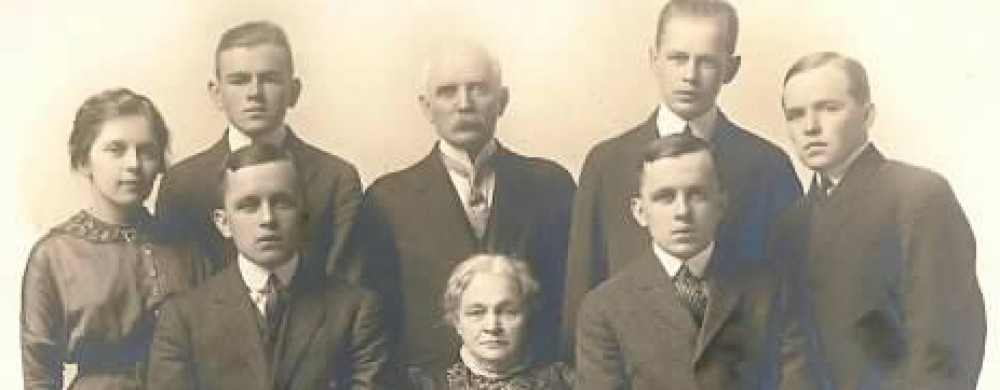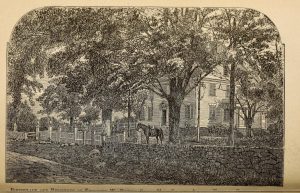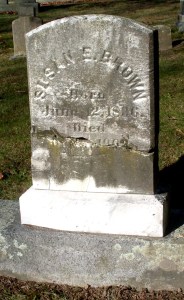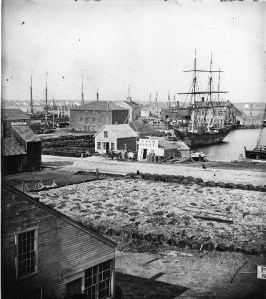Married couples before the twentieth century had no choice but to produce a new baby about every other year. Despite high infant mortality, families with twelve or more children were not uncommon.
What about couples not “blessed” with children? Were they all ‘sad and unfulfilled,’ as common wisdom says? Some would have felt their lives lacking, certainly. Some would have relished their quieter, simpler home lives. Besides, married people, with and without offspring, routinely engaged with their in-laws, nieces, nephews, and neighbors’ children. Relatives routinely took in youngsters (temporarily or permanently) whose parents were sick or had died, or just to help out during hard times.
For businessmen connections were necessary to build and maintain wealth. Reading wills made by men (and women) of property, provides evidence that childless couples were neither isolated from fecund folks, nor lacking in ties to young people.
The union of Jonathan and Sibil (Tisdale) Slead (Slade)‘s is one such example from my colonial era cousins in Bristol County, Massachusetts. The pair wed in December 1725, [1] and lived in the town of Swansea.
Among other interests, Jonathan operated Slade’s Ferry across the Taunton River. [2] When he died in 1764, his will left land and property to kinsmen and “cousins” (most of whom were children of his deceased brothers). He also left a considerable estate to his beloved wife, Sibel. [2]
When Sibel turned 70 years of age, she made her own will, “I Sibil Slead of Swanzey…” dated May 10 1771 and approved for probate August 3, 1779 (her death occurred somewhere between).
With the first item, Sibel earmarked five pounds in money to the Baptist Church of Christ. Next, she dealt with land given to her Slead (Slade) kinsmen. More bequests were made to in-laws, sisters and a brother, all of which is pretty regular stuff. Then, the next item caught my eye:
“I Give and Bequeath to Sibel Chase (b. 1740), daughter of Elisha Chase, and to
Sibel Tisdale (b. 1750), daughter of Antipas Tisdale, and to
Sibel Shearman (b. 1746), daughter of Salsbury Sherman, and to Sibel Winslow (b. 1748), daughter of George Winslow, and to Sibel Tisdale (b. 1758), daughter of Solomon Tisdale, and to Sibel Slead (b. ?) daughter of Benjamin Slead, and to Sibel Slead (b. 1765) daughter of Phillip Slead…” [3]
Over a period of twenty-five years, seven babies were given Sibel’s name, beginning in 1740, the 15th year of the Slade’s marriage. The timing seems poignant, as Sibel was approaching her 40th year, suggesting that she may have shared with intimates, her belief that she wasn’t destined to have a child of her own. As the will demonstrates, Sibel had the sympathy and regard of seven sets of parents, al least. (It is possible, there were more little Sibels, but they did not survive to be included.)
Sibel’s parting gift to her namesakes was of the sort she might have left to a daughter of her own; she dictated:
“…to each of them six silver Tea spoons to be delivered to them by my Executor.”

image donated to Wikimedia Commons.
Next Time: Some not-so-nice revelations from the wills of Jonathan & Sibel (Tisdale) Slade.
Sources
- “Rhode Island Town Marriages Index, 1639-1916,” database, FamilySearch (https://familysearch.org/ark:/61903/1:1:Q29P-7BW1 : accessed 16 August 2017); Swansea, Bristol, Massachusetts, United States, town halls, Rhode Island, and Rhode Island Historical Society, Providence; FHL microfilm 52.
- Taunton Daily Gazette; OUR VIEW: Crossing the Taunton — A history; https://www.tauntongazette.com/article/20110717/News/307179955
- Will of Jonathan Slead of Swanzy; NEHGS, AmericanAncestors.org (AmericanAncestors.org : accessed 16 Aug 2017), Slade. Rec. Date: 8 Apr 2016; Mayflower Descendant, The; Vol 46 (1996), page 40.
- Will of Sibil Slead; Ancestry.com (http://ancestry.com : accessed 2 Jul 2021); Ancestry.com. Massachusetts, U.S., Wills and Probate Records, 1635-1991. Rec. Date: 8 Jan 2016; Probate Records 1687-1916; Index, 1687-1926 (Bristol County, Massachusetts); Author: Massachusetts. Probate Court (Bristol County) : Vol 26, 1779-1781.





![Obelisk inscribed "It is finished," B.F. Hathaway monument in Oak Grove Cemetery (New Bedford, MA) [Find A Grave contrbutor, goose ]](https://pooririshandpilgrims.com/wp-content/uploads/2017/03/bf-hathaway-it-is-finished.jpg?w=75)

![Worn by a New Hampshire bride in 1857. [Smithsonian National Museum of American History]](https://pooririshandpilgrims.com/wp-content/uploads/2017/02/1855-smithsonian-ah.jpg?w=200)







